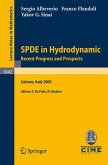
Broschiertes Buch
Softcover reprint of the original 1st ed. 2001
16. September 2012
Springer / Springer New York / Springer, Berlin
978-1-4612-6564-1
| Gebundenes Buch | 243,99 € | |
| eBook, PDF | 169,95 € |

Gebundenes Buch
2000.
28. Dezember 2000
Springer / Springer New York / Springer, Berlin
10659102,978-0-387-98985-3
Statt 18,80 €**
13,99 €
**Preis der gedruckten Ausgabe (Broschiertes Buch)
inkl. MwSt. und vom Verlag festgesetzt.
Sofort per Download lieferbar
Statt 18,80 €**
13,99 €
**Preis der gedruckten Ausgabe (Broschiertes Buch)
inkl. MwSt. und vom Verlag festgesetzt.
Sofort per Download lieferbar
Statt 18,80 €**
13,99 €
**Preis der gedruckten Ausgabe (Broschiertes Buch)
inkl. MwSt. und vom Verlag festgesetzt.
Sofort per Download lieferbar
Statt 18,80 €**
13,99 €
**Preis der gedruckten Ausgabe (Broschiertes Buch)
inkl. MwSt. und vom Verlag festgesetzt.
Sofort per Download lieferbar
eBook, PDF
1. März 2021
kopaed
Ähnliche Artikel

Broschiertes Buch
General Theory of Vortices
Softcover reprint of hardcover 1st ed. 2003
1. Dezember 2010
Springer / Springer Berlin Heidelberg / Springer, Berlin
978-3-642-07584-1

Broschiertes Buch
Lectures given at the C.I.M.E. Summer School held in Cetraro, Italy, August 29 - September 3, 2005
2008
14. April 2008
Springer / Springer Berlin Heidelberg / Springer, Berlin
12233588,978-3-540-78492-0

Gebundenes Buch
2007
12. Dezember 2006
Birkhäuser / Birkhäuser Basel / Springer, Basel
11610489,978-3-7643-7741-0

Gebundenes Buch
2006
20. Juni 2006
Birkhäuser Basel / Springer, Basel
11610458

Broschiertes Buch
2. Aufl.
31. August 2018
Birkhäuser / Springer International Publishing / Springer, Berlin
978-3-319-87633-7

Gebundenes Buch
Repr. 2012
22. Januar 2013
Springer / Springer Milan / Springer, Berlin
86189484,978-88-470-5213-0

Broschiertes Buch
Cetraro, Italy 2017
1st edition 2020
29. April 2020
EMS / INdAM / Springer / Springer International Publishing / Springer, Berlin / Top Global Universit
978-3-030-36225-6

Broschiertes Buch
Lectures given at the C.I.M.E. Summer School held in Martina Franca, Italy, September 1-5, 2003
2006
10. Januar 2006
Springer / Springer Berlin Heidelberg / Springer, Berlin
11545989,978-3-540-28586-1
Ähnlichkeitssuche: Fact®Finder von OMIKRON
